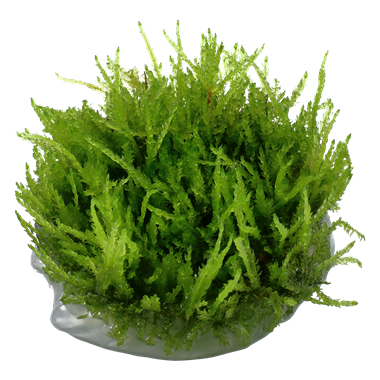
Tropica Vesicularia ferriei 'Weeping' 1-2-GROW!
Live Plant Handling
Guaranteed Optimum Condition : we adopt express delivery for all live plants order to ensure optimum condition when they reaches you
An additional $5 Live Plant Handling fee will be added during check out for all live plants purchased. (This is not included in the Free Delivery)
VESICULARIA FERRIEI 'WEEPING'
- Aquarium plant from tissue culture in closed cup.
- Vesicularia ferriei 'Weeping', commonly known as Weeping Moss, is believed to originate from China and has been distributed by Oriental Aquarium Plants.
- 'Weeping' is a fleshy, 1-3 cm tall hanging moss with teardrop-like bright green shoots.
- It is best attached to driftwood or roots, as its drooping growth pattern helps to create depth and contrast in the aquarium.
- Weeping' has low demands, is fast growing and should be pruned frequently with scissors to maintain an attractive shape.
PLANT INFO
| Type: | Moss |
|---|---|
| Origin: | Asia |
| Growth rate: | Medium |
| Height: | 3 - 5+ |
| Light demand: | Medium |
| CO2 : |
1-2-GROW!
Small plants with great success. 1•2•Grow! Are very young plants cultivated and delivered directly from our laboratory. The plants are guaranteed to be free from snails, algae and pesticides and therefore are totally harmless for sensitive shrimp and fish. The range offers unique plants!
Success with your aquarium depends largely on the proper plant choice. In a 1•2•Grow! cup you buy a myriad of plants which can be divided into small portions and cover a larger area. Plants are compact from the start so you will experience a dense and beautiful growth, if you give them the right fertiliser and CO2 from the start! The range is perfect for small and medium sized aquariums, and your patience will be rewarded...
The range offers several mosses and specialties such as Rotala macrandra, Rotala 'Bonsai' and mini versions of traditional varieties such as Alternanthera and Eleocharis.
See our video about how to handle these plants here or read below:
- Carefully take the plant out of the cup and rinse off the growing media under the tap.
- Split the plant in 6-8 portions using your fingers or sharp scissors (for small foreground plants).
- Plant portions into the substrate using tweezers. Then watch them grow!


